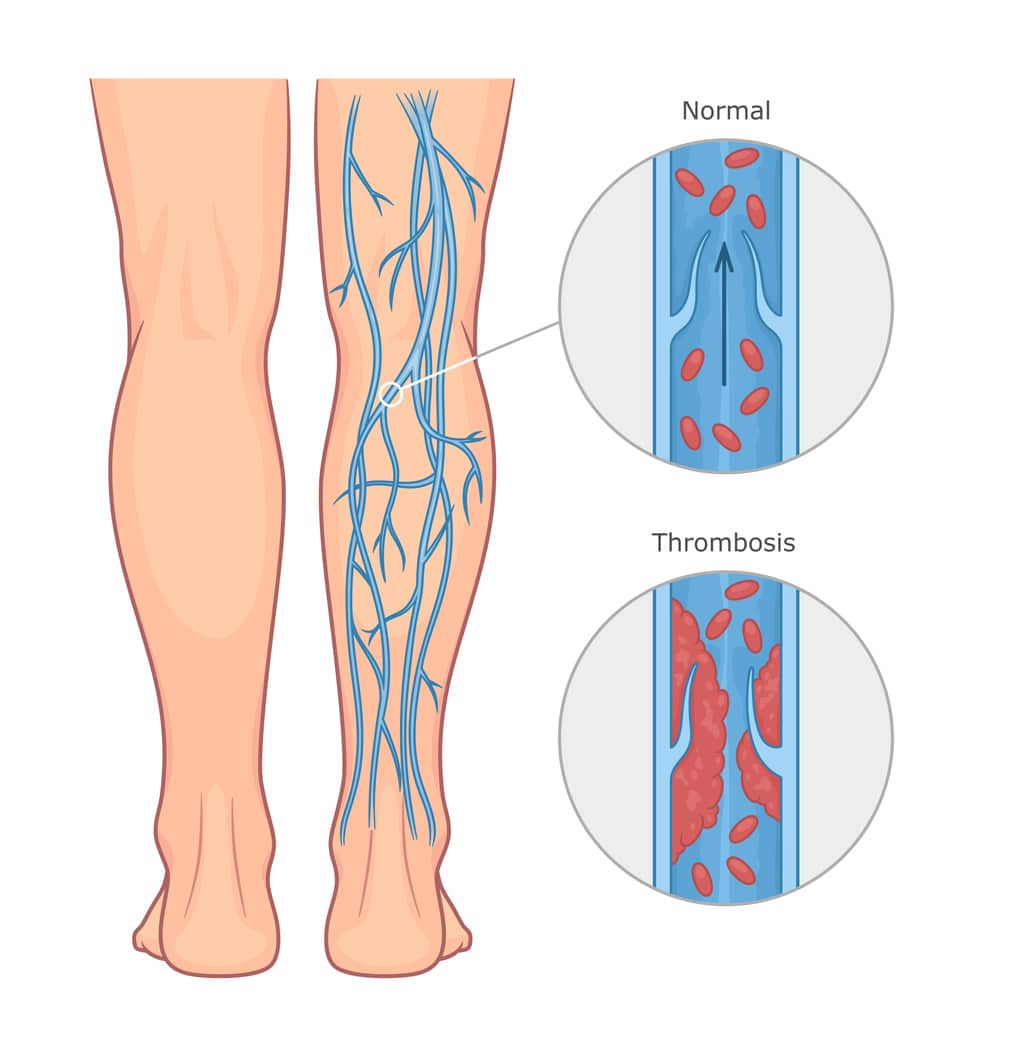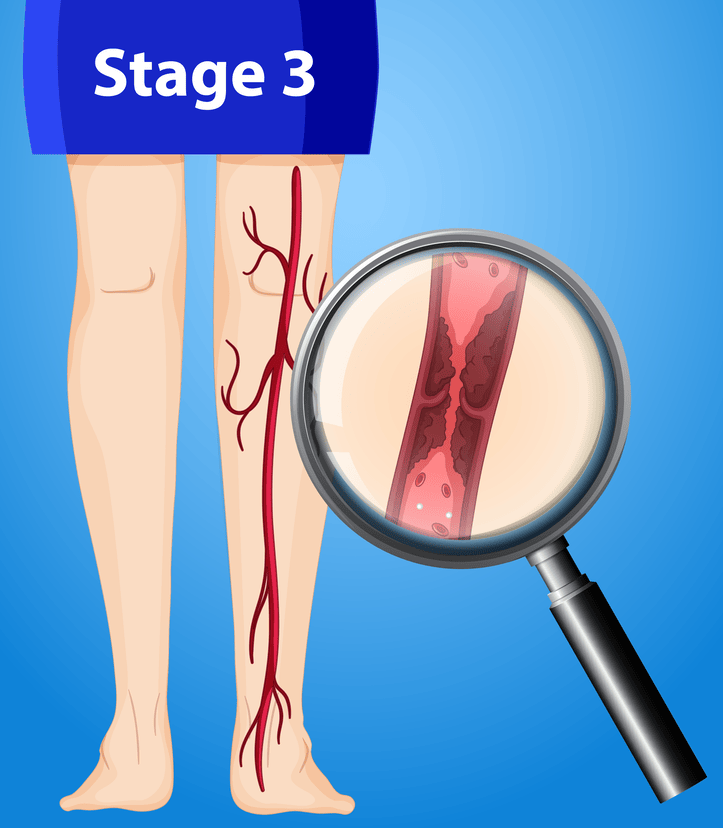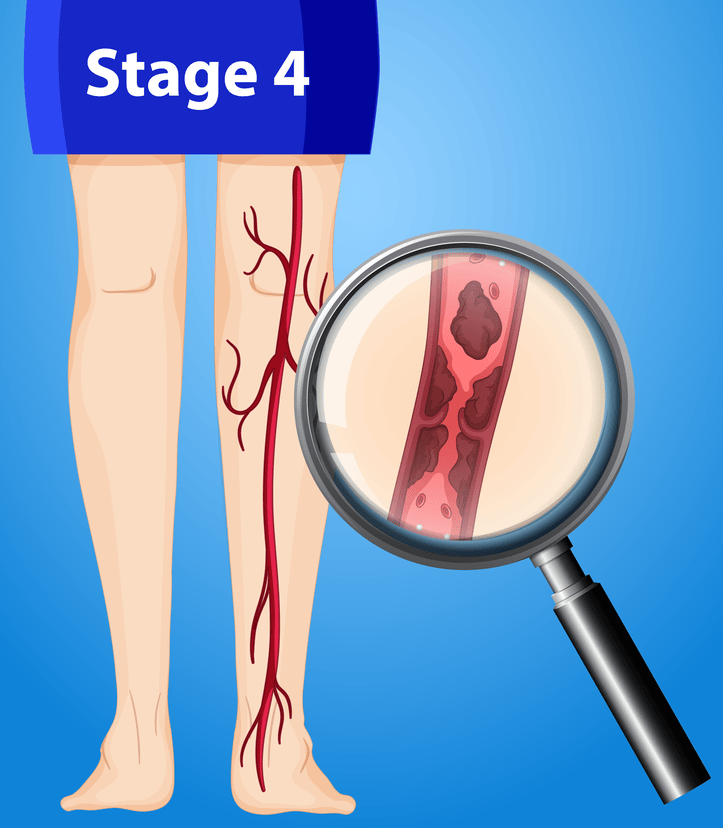Deep Vein Thrombosis (DVT)
What is a Deep Vein Thrombosis (DVT)?
Deep Vein Thrombosis (DVT) occurs when a blood clot (thrombus) develops in one or more of the deep veins of the legs, pelvis, or arms. Blood clots can form in either superficial veins (known as superficial thrombophlebitis) and/or in the deep veins. Blood clots in superficial veins rarely cause serious problems; however, clots in the deep veins require immediate medical attention.
Veins located deep in the center of the leg are surrounded by strong muscles. When they contract, they force deoxygenated blood back to the lungs and heart. In a healthy vessel, one-way valves prevent the backflow of blood between the contractions. Through repeated contractions, the blood is ultimately returned from the legs to the heart. The development of clot in the legs can result in serious morbidity and can even be fatal. Clots in the legs can break off and travel through the bloodstream to the heart and lungs as a pulmonary embolism (PE). Large pulmonary emboli can cause critical strain on the heart, resulting in cardiac arrest. Beyond the risk of migration, thrombus in the legs can cause severe swelling and pain in the leg, which can be permanent. In rare cases, the clot itself can threaten the viability of the affected limb.

What are the common symptoms of DVT?
Warm feeling in the affected limb
Discoloration of the skin (bluish or reddish)
Distension of superficial veins at the skin
Swelling
Pain or tenderness in the affected limb when pressure is applied
What are the common symptoms of DVT?
Warm feeling in the affected limb
Discoloration of the skin (bluish or reddish)
Distension of superficial veins at the skin
Swelling
Pain or tenderness in the affected limb when pressure is applied

Schedule a consultation to see how we can help!
What are the risk factors associated with DVT?
Blood clots in deep veins can develop when the circulation of blood slows down due to injury, illness, or inactivity. Blood can accumulate or “pool,” leaving a perfect setting for a clot to form. Risk factors for DVT include:
Obesity
Coagulation abnormalities
Injury to the lining (endothelium) of the veins
Previous or current cancer
Inflammatory diseases and some autoimmune diseases
Pregnancy or postpartum
Hormone therapy or oral contraceptives
Over the age of 40
Recent injury of surgery
Antiphospholipid syndrome
Immobility, such as bed rest or sitting for extended periods of time
Previous or family history of DVT
Smoking
Heart failure
Infection
Polycythemia vera
Nephrotic syndrome
HIV
Chemotherapy
IV drug use
Foreign bodies (e.g., central venous catheters)
Obesity
Coagulation abnormalities
Injury to the lining (endothelium) of the veins
Previous or current cancer
Inflammatory diseases and some autoimmune diseases
Pregnancy or postpartum
Hormone therapy or oral contraceptives
Over the age of 40
Recent injury of surgery
Antiphospholipid syndrome
Immobility, such as bed rest or sitting for extended periods of time
Previous or family history of DVT
Smoking
Heart failure
Infection
Polycythemia vera
Nephrotic syndrome
HIV
Chemotherapy
IV drug use
Foreign bodies (e.g., central venous catheters)
What are the stages of Deep Vein Thrombosis?
Hover over the image to get a closer look at each stage!





DVT Diagnostic Testing


